The following is taken from ‘A local history of Whixall’ commonly referred to as ‘Fancourt’. It was published to commemorate the 125th anniversary of St. Mary’s Church with Bill Fancourt contributing the leading article on ‘The early history of Whixall to 1851’. The following extracts were performed by Isabelle James for her piece on ‘Education in Whixall’. Initial extracts were made in 1986, revised in 1992.
The Church School, Church Lane.
1706: This is the earliest date found of any form of schooling. This was Dr Samuel Benyon’s Academy at High Farm, or Higher Farm as is known today. Dr Benyon was a grandson of Richard Sadler who was a dissenter during the reign of Charles II who would not assent to the Act of Uniformity. It is not clear whether this was a school for the children of dissenting parents of for the training of dissenting preachers.
1848-49: This was the date of the building of a school on the site of the (now) Social Centre, where the Anglican Church was, and it was a church school. The cost of the structure with a residence for the head-master was £655 13s 6d, of which the (National) Committee of Council on Education gave £150 towards the master’s residence, The National Society £50, The Diocesan Society £40 with £10 for fittings. The sum of £405 18s 6d was raised by donations and subscriptions, of which £276 18s 6d was given by the Incumbents of Whixall. About 100 children attended the school.

The completed school was opened in 1850, Mr George W L Reynolds was headmaster and the vicar acted as a Trustee and Manager. By 1875 Mr James Edes was head teacher and the Rev John Evans Trustee and Manager. The vicar used to go into school regularly to check registers and hear the fourth year standard reading.
Many children it is noted in the log were withdrawn for service just before the age of thirteen, which was the official school leaving age. In these times a great deal of sickness was prevalent, bad weather and (domestic/farming) working at home often kept children away from school.
School inspectors and attendance officers visited the school at regular intervals. Great emphasis was placed on attendance. An Inspectors report at the time stated that several subjects the pupils were taught needed to be brought up to the standard of the Education Code.
1883: Mr C Muller came to teach children weekly singing and music on advice from a Diocesan Inspector who had remarked on the lack of music during the singing lesson.
A typical list is given for the songs the children learnt in 1884.
A Hunting Song
Some Folks (Folk songs)
Wings
When our work in school is done
Good King Wencleslas
Kind words can cheer the heart
Life is full of Ups and Downs
Be kind to the loved ones at home
Come Lassies and Laddies
The Gypsy girl
1886: James Ede resigned as Headmaster with the occasion marked with a school treat. Mr William Roberts, a certificated teacher of the First Class took charge of the school.
Sergeant Booth was the newly-appointed Schools Attendance Officer who visited school regularly and took the names of pupils who were irregular in their attendance.
The school year varied from today in that it ran from 1st November, summer holidays were short and they usually ran concurrently with farming needs i.e. at the time of harvest. Entertainments were held periodically in the School for the purpose of raising funds for the purchase of books.
24th June – 4 July 1887: School was closed – both for celebration and with the festivities held at the School for Queen Victoria’s Jubilee.
1889: The Rev JJ Addenbrooke was instituted as the new vicar carrying on the work of Rev Waldren in helping with religious instruction at the School.
1890: The headmaster was joined by an assistant teacher – Miss Nellie Hargreaves – which was a great help as often the headmaster was teaching up to 100 children alone.
1981: A statement was found referring to Miss Green’s ‘private adventure school’, located in Hollinwood, after a pupil was removed to attend the church school.
Mr Charles Bird, a certified teacher from London and Willenhall, took over headship, with Mrs Bird taking charge of infants.
Free education began, with no fees being charged for any of the ‘standards’. However, as a consequence, a circular was sent to all parents stating that attendance would be more strictly enforced.
The new nondenominational school opened (Whixall School as is today, 2021) with about 25 children moved to attend this new school; indicating that at least a quarter of inhabitants in Whixall were nonconformists.
Headmasters at the church school then changed several times over the next years.
1897: Chas F Hobday was now the school head, a position he retained for 32 years up until 1929. His wife also taught at the school for 24 years before ill-health forced her to retire. Upon retirement, for their devoted service, Mr Hobday was presented with a gents gold Hunters watch, while his wife received a gold brooch and ear-rings.
Miss Edith Hall who began teaching as a paid monitor became a ‘pupil teacher’ and went on to give 48 years of service before retiring in 1949.
At this time, c1900, an assistant teacher was paid £35 p.a. (equivalent to c£4400 in 2021) while the school cleaner was paid £10 (£1260).
1907: Notice was received from the Board of Education that the words ‘Church of England’ would be substituted for ‘National’ within the school’s name.
1929: Following on from Mr Hobday, Miss Lydia M Bishop was appointed headmistress. She had already spent a year at school as a student teacher before leaving to attend Teacher Training College in London in 1921. She returned as head-teacher and regular inspections by both diocesan and government parties gave good reports on her work.
1934: School was closed for a day in respect of the passing of Rev JJ Addenbrooke who had given 45 years of service to both the school and the parish. Both pupils and staff attended his funeral.
1938: After the summer holidays of this year all pupils over the age of eleven, at both schools, were transferred to attend Wem Senior School. A letter was sent to both schools detailing the transport arrangement for pupils from Whixall (to Wem). It was requested of the Local Education Authority that the bus enter Whixall via Post Office Lane, pass the Church School, proceed up Church Lane to Hollinwood and then, via the Waggoners Inn and Welsh End pass the Council School before departing Whixall via Ossage Lane to Wem.
The Church School opened in September as a Mixed Junior School.
1939: Miss Lydia Bishop tendered her resignation due to her forthcoming marriage. However no suitable applicants were interviewed as a replacement and so the now new Mrs Lydia Brown was to stay for the duration of the war.
Arrangements were made for the teaching of local and evacuated children – 69 (CoE Children were billeted in Whixall*). For a few months teaching arrangements were:
9am-12.30pm Local Children 12.30pm-4pm Evacuees
Local children were dismissed at 12.30pm as evacuees were being assembled in the playground. By October the evacuees were all moved to the Council, Brownsbrook, School.
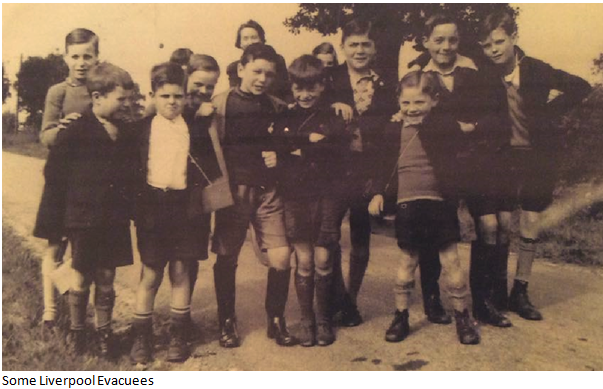
*Although records may show that 69 Church of England pupils were billeted we know that a high proportion of evacuated children were Catholic by religion – see People, Sarah Tabuns and Joseph Phelan. It is believed that this difference gave rise to the separated teaching periods.
1944: The Education Act of 1944 was passed but it was a further two years before its affects were felt in Whixall.
1946: This year saw the start of cooked dinners being provided from the Wem Central Kitchen. Better facilities were provided including swimming lessons, at Prees Heath baths, and the provision of plimsolls for gym.

[Prees Heath open air baths were originally on the common somewhere near the junction of the A41 and A49].
Picture taken from: https://www.preesheathcommonreserve.co.uk/Prees_Heath_History.html
1956: Electricity reached the school.
1959: The school became ‘Controlled’. The Church maintained an interest, owning the buildings, and the vicar was the ‘manager’. But the local authority took over the upkeep and maintenance of the buildings.
1967: As pupil numbers began to fall over the next few years a decision was taken to close the C of E school at Church Lane and merge it with the Council school at Brown’s Brook. This coincided with the retirement of Lydia Brown who had been headmistress for 38 years – having only been kept on to cover the war years!
Back to top of page
The UnDenominational School, Brown’s Brook.
1891: This school opened on 2nd November 1891. It cost over £1600 (equivalent to £208,000 in 2021) which included the Master’s house (now in private residence). Mr Joseph Ainsworth was the headmaster with Mrs Jane Ainsworth the infants teacher and Mr Richard Butler the school secretary. Attendance on the first day of school was 33 boys and 34 girls.
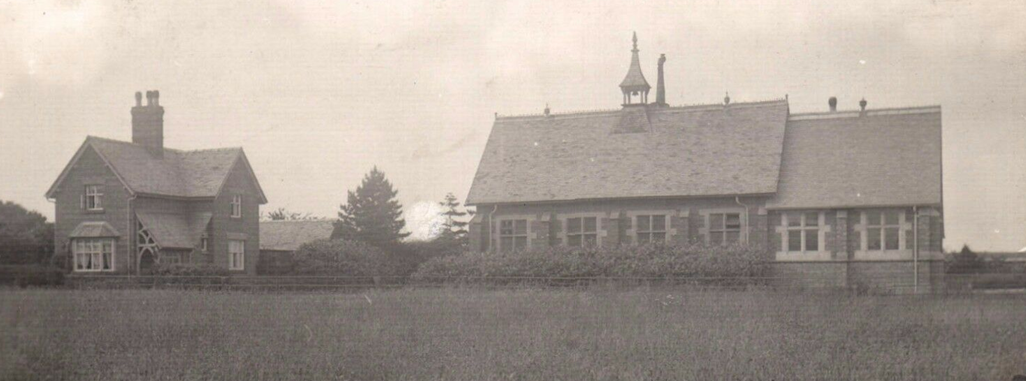
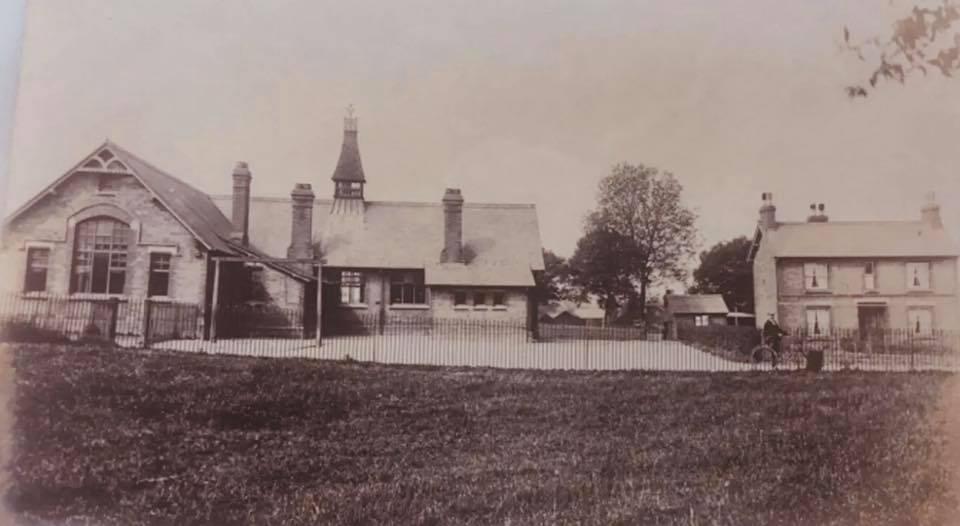
1892: In keeping with the levels of non-conformity in Whixall by January pupil numbers had risen to 104 with numbers at the end of the year increasing to levels whereby Mr Ainsworth was requesting further rooms as the existing building was over-crowded. There were times when pupil numbers dropped throughout the year due to infectious diseases and bad weather.
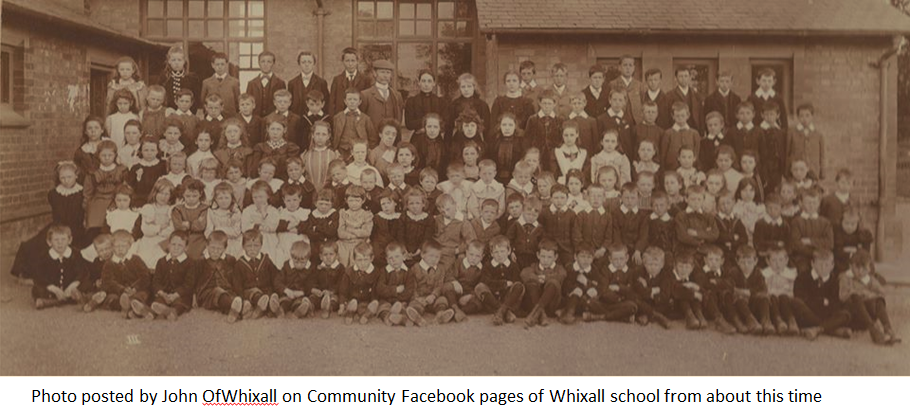
1893: August witnessed the initiation of an annual Scholar’s Treat. This was an event whereby c300 people, consisting of pupils, staff, parents and friends drove around the neighbourhood in horse-drawn traps cumulating in tea and games on the school playing-field accompanied by music provided by Whixall Brass Band. One assumes this was a weekend rather than a school day.
1894: In February work commenced on the required expansion in space with the addition of an Infants room. Work was still on-going in April to the extent it was deemed necessary to close the school due to interruptions to lessons and the noise of construction. Work was completed in June and a tea-meeting and public opening held on completion.
1896: A piano was installed. Mr Ainsworth noted in the school log that he was very pleased that ‘drill’ could now be taken with pianoforte accompaniment.
1900: School cottage gardening was introduced and, after very long negotiations, a quarter plot was purchased next to the school for this purpose. At its first harvest c300lbs of potatoes were grown, dug up and sent to market; proceeds were added to school’s fund. Mr Ainsworth was so pleased he had the ‘boys’ photographed with tools in hand by Josiah R Crosse (at 56 Bargates, Whitchurch) and each boy was presented with a copy.
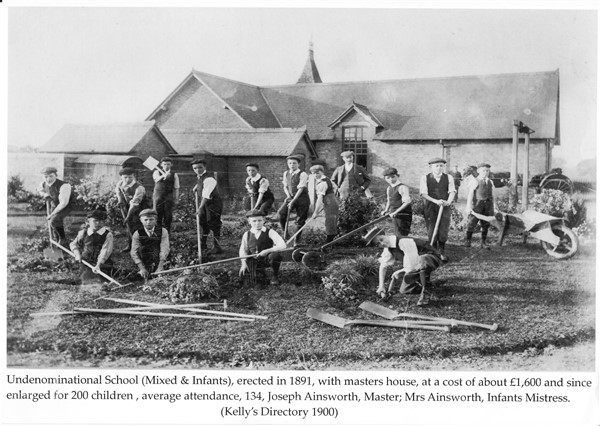
1902: Mr Ainsworth started a school bank, the children brought in their money!? to buy savings stamps which were kept on a card (what happened to them when the card was full?). In the log he reports he adopted this scheme when he heard that some of the older boys were buying cigarettes at the local shops. He confiscated a packet from one boy and sent them home with a note to the father. Unfortunately he later learnt that the cigarettes were given back to the boy who promptly smoked them.
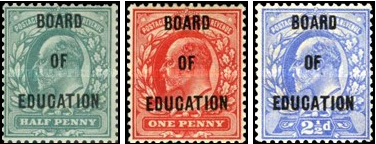
The log also reports a keen interest in nature by the children who frequently brought in subjects such as caterpillars and tadpoles etc.
1903: Sanitary conditions were still in need of improvement – waste and drain pipes were continuously blocking up. Unfortunately before anything could be done it had to be put forward and discussed by the school’s managers at one of their meetings, progress was slow.
A new cleaner, Mrs Robert Dulson, was appointed at £12pa but with the requirement she provide all her own materials. Emptying the closets (flinging the bucket contents) was still the responsibility of the older boys for which they were paid 6d week (cigarettes at the time cost 2d for ten).
Mr Ainsworth and his wife Jane had three daughters – Winifred, Kathleen and Dorothy – who all worked in the school. However, the women of the family were not in the best of health and so many lessons were disrupted due to their illnesses.
1906: Miss Kate Perry joined the teaching staff which greatly reduced the strain on Mr Ainsworth who had, for several months, taught over 50 infants single handed. This year Winifred Ainsworth was pronounced as unfit for work and so she was replaced by Miss Sarah Eaton. Miss Eaton did not stay long as her father obtained a post for her nearer to home (St Helens) and so she was replaced by Miss Edith Barron.
Teachers were selected by the County Council and were then approved by the managers.
1909: Dr Auguste Boyes (from Shrewsbury) started medical examinations. Parents were invited to attend and all children of around eight years of age were inspected.
1910: From the log of December the headmaster reported the apparent kidnap of a pupil – Harry Davies. Harry lived with his grandmother after his parents had sailed to Canada to start a new life. Apparently the father, back from Canada, took advantage of the grandparent’s absence one Saturday morning, as they attended a funeral, to seize the boy ‘kicking and screaming’. The father had arranged the loan of a trap from a local farmer who later confessed his part to Mr Ainsworth. The boy could not be traced and it is thought that they had boarded an early train on Sunday morning to Middlesborough and had subsequently sailed to Canada.
Angry scenes were reported from the said farmers house, shots were fired by the occupants and police were called to disperse the crowd, said to be numbers of 50-60.
1911: June saw the coronation of George V and celebrations were indulged. A church service was followed by a procession to the council school where children and parishioners, number 950, were given a free meat tea followed by the distribution of commemorative medals and mugs. Sports and dancing were held in the field next to the school.
1916: Nurse Owen, the appointed ‘school nurse’, started head lice inspections. Anyone found to have ‘nits’ was excluded from school and treated at home.
1918: Two notable events – Mrs Ainsworth tendered her resignation after 27 years in post, and the younger daughter, Dorothy, died of appendicitis. The school was closed for a week.
1919: The Board of Education forbade the continued use of ‘slates’ and a separate book was recommended for arithmetic. Now that War had ended the older boys were involved in preparing the ground for a War memorial.
1921: Mr Ainsworth retired at the end of the summer after 30 years in post. He was presented with a clock in an oak case. He was much affected by the children’s appreciation of him that he found it difficult to say a few parting words.
He was also presented with a leather wallet containing notes from the Managers and the Parish Council, for whom he had been Chairman ever since its inception.
Mr Francis Morris from Caergwrle (near Wrexham) was appointed Headmaster.
1923: Mrs Butler, formerly Miss Lewis, handed in her resignation. This was regretted by Mr Morris as he found her a reliable and conscientious teacher. She was replaced by Miss EM Blakemore.
1924: Thomas Hoday of the C of E School House commenced duty as a student teacher for a year.
1925: Joseph Ainsworth passed away after a serious illness. The school was closed for his funeral.
1926: Miss Blakemore, who moved to Madeley School near Newcastle, was replaced by Miss Mabel Smith.
1927: Kathleen Ainsworth, the middle daughter, finally terminated the Ainsworth connection to Whixall School when she moved to work at Whitchurch CoE Infants School to be nearer to home. Miss Muriel Baines, now Mrs Cecil Ridgeway of Whixall, was appointed to replace Kathleen.
1928: The school had a netball team who were very successful in the local schools’ league. By the 1930s they were second in the table and in one match, away from home, they beat Loppington School 29-6.
The school also had a senior choir and they represented Whixall at the Whitchurch and District Schools Festival. They were highly commended for their rendition of the songs ‘Blow Away the Morning Dew’ and ‘As I Walked through the Meadows’.
1929: The school dentist now made visits and the nit-nurse, now Nurse Harris, made regular inspections. After one visit she was to remark on the cleanliness of the children’s heads as well as their necks and ears.
A sewing machine was purchased with the proceeds from the Christmas Concert. The girls sold their needlework garments to help boost school funds.
1930: (pictures added later and not part of the original article)
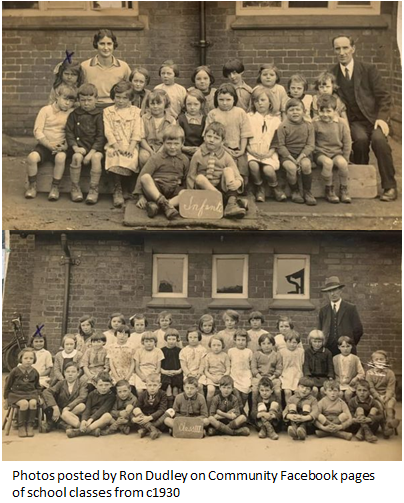
1967: There were three schools in the area – Edstaston, Whixall CoE on Church Lane and Whixall Council school at Brown’s Brook. The Whixall schools amalgamated on the Brown’s Brook site and Miss Brown from Edstaston became the new head.
1991: This year was the centenary of the School building – it was celebrated by a week of activities. Pupils and staff dressed in period costume and held lessons in the Victorian style; they gave an afternoon concert and tea for senior citizens, many of whom had been pupils themselves. An exhibition of photographs, memorabilia, school books and registers from the early days of the school proved to be of great interest to all.
The school bell tower was revitalised with the installation of the bell from the old Edstaston school.
Back to top of page